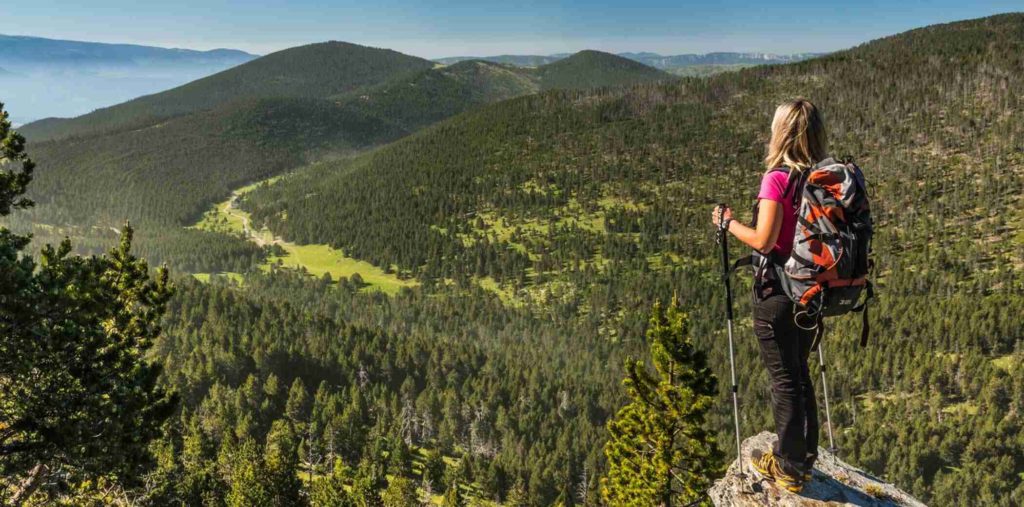Thelargest protected natural area in Catalonia


Facilities
Accessible
Picnic Area
WC
Shop
Hermitage
Museum
Observatories
Refuge
Viewpoint
Signposted itineraries
This unique territory is a reserve of the Pyrenean natural and cultural heritage. It stands out for the extensive pastures maintained due to the action of the cattle and hosts a wide variety of species protected from emblematic animals such as the capercaillie, the badger or the brown bear as well as plants, where endangered or rare species of flora can be found in Catalonia.
It has an extensive network of signposted paths that connect all the valleys by reclaimed historic paths.
The Valls d’Àneu is one of the five great valleys that make up this park. In it you can visit several areas of the Park of high natural and landscape value, including:
Mollera D’Escalarre
The tailwaters of La Torrassa reservoir form the Park’s main wetland. A large riparian forest, reedbeds and open water areas make this a resting area for numerous migratory birds An ideal place to observe the fauna and the landscape with short walks around it, leaving the vehicle at La Guingueta d’Àneu.
Àrreu and Airoto Valleys
The Àrreu and Airoto valleys are some of the best preserved in the Catalan Pyrenees, as they can only be reached on foot. The magnificent lakes of the Rosary, Garrabea and Airoto are joined by the diversity of rocky substrates (shale, granite and limestone), and the existence of virtually unaltered forests of spruce and black pine.
To visit this area you have to start from the village of Boren (Vall d’Arreu) or from the villages of Isil and Alós (Airoto). The area is also accessible walking from the Port de la Bonaigua, following the route of the Alta Ruta Pirinenca or from the Pla de Beret (Baciver).
Bonabé Valley
It is accessed by Alós towards the Fornet refuge. Great valley with extensive mature forests of black pine, fir and Scots pine, which by their structure are home to many emblematic species of the Park. The calcareous substrate causes karstic phenomena and favors the presence of very rare plants in Catalonia. At the border we find some basic mountain ports in the communication between the Pallars and the neighboring Ariège, such as Salau or Clavera. Nearby, abandoned mines and the remains of the La Matussière cable car explain the importance of using natural resources in the past.
We recommend that you leave your vehicle at the Fornet Refuge, as it is the starting point for several itineraries that will allow you to visit this magnificent valley.
Unarre Valley
Presided over by Mont-roig (2,864 m.), It forks into two valleys connected by the Curiós pass, Unarre and Nyiri valleys Dominated by meadows and several glacial lakes, including the Gola and the Tres Estanys lakes From the strategic hermitage of Sant Beado you can enjoy a fantastic view of the valley.
It is recommended to leave the car, if you do not have an all-terrain vehicle, in the car park at the entrance to the village of Cerbi.
Cliffs of Escaló and Estaron
Going up the road, to the right of the medieval village of Escaló, there are imposing slate cliffs that are difficult to access, where the ravines at the top end up forming long, thin waterfalls. Their natural value lies in the fact that they are home to several birds of prey, which take advantage of the inaccessible rock escarpments to make their nest. To visit the area, the most recommended is from Escaló, follow the path on foot to the old Romanesque monastery of Sant Pere del Burgal and return along the same path.
Oppening Hours Summer
From Monday to Friday
9 a.m. to 2 p.m.
Oppening Hours Winter
From Monday to Friday
9 a.m. to 2 p.m.
Address
Carrer de la Riba, 1 25595 Llavorsí Lleida / Pirineus
Tel. 973 62 23 35
